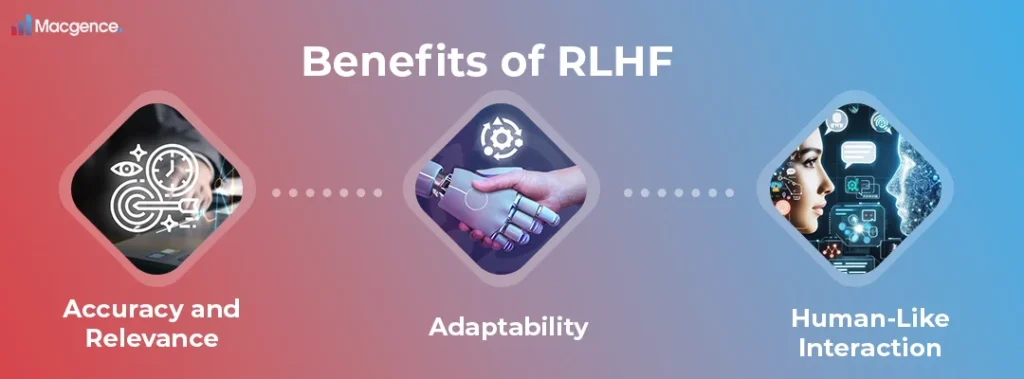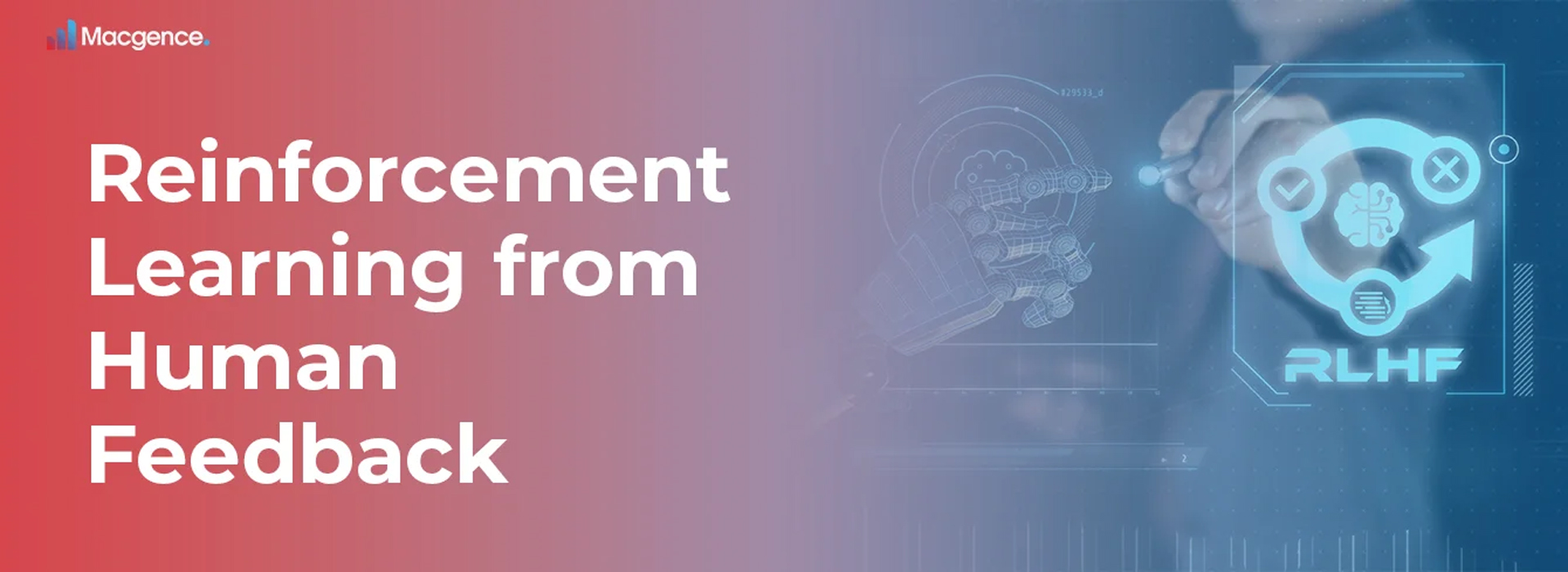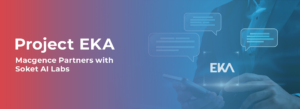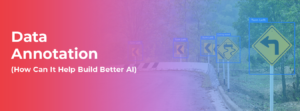Reinforcement Learning from Human Feedback is your Savior for AI Models
Artificial intelligence (AI) frameworks and AI chatbots rely heavily on machine learning. Machine learning uses mathematical formulas and datasets to learn new information without supervision. A bridging mechanism then translates the data into contextualized interactions. This is where Reinforcement Learning from Human Feedback (RLHF) comes into play.
Read the blog below to explore these concepts in detail. Know their applications, significance, benefits, and the improvements they bring to AI models.
Reinforcement Learning from Human Feedback (RLHF)
A powerful machine learning (ML) technique called reinforcement learning (RL) teaches a machine to make decisions by interacting with its surroundings. Additionally, it goes one step further by introducing human feedback into the learning process. This augmentation involves using human testers’ comments and conventional reinforcement learning to train AI models. It also improves the model’s performance using human insight, making it more sensitive and adaptable to real-world situations.
The Significance of Human Feedback
Human feedback is vital in reinforcement learning for several reasons. First, it addresses the limitations of predefined rewards in traditional reinforcement learning (RL), which often struggles to encapsulate complex human preferences or ethical considerations. Human input, therefore, becomes indispensable in tasks that demand a nuanced understanding of what constitutes “correct” or “desirable” outcomes, guiding AI systems towards behaviors that are effective, ethically sound, and aligned with human values.
Applications of RLHF

Application in Language Models
Language models like ChatGPT are prime candidates for RLHF. While these models begin with substantial training on vast text datasets that help them to predict and generate human-like text, this approach has limitations. Language is inherently nuanced, context-dependent, and constantly evolving. Predefined rewards in traditional RL can only partially capture these aspects.
RLHF addresses this by incorporating human feedback into the training loop. People review the AI’s language outputs and provide feedback, which the model then uses to adjust its responses. This process helps the AI understand subtleties like tone, context, appropriateness, and even humor, which are difficult to encode in traditional programming terms.
Some other critical applications of RLHF include:
Autonomous Vehicles
RLHF significantly influences the training of self-driving cars. Human feedback helps these vehicles understand complex scenarios that training data needs to represent better. This includes navigating unpredictable conditions and making split-second decisions, like when to yield to pedestrians.
Personalized Recommendations
In the world of online shopping and content streaming, RLHF tailors recommendations. It does so by learning from users’ interactions and feedback. This leads to more accurate and personalized suggestions for enhanced user experience.
Healthcare Diagnostics
In medical diagnostics, it assists in fine-tuning AI algorithms. It does so by incorporating feedback from medical professionals. This helps more accurately diagnose diseases from medical imagery, like MRIs and X-rays.
Interactive Entertainment
Video games and interactive media can create dynamic narratives. It adapts storylines and character interactions based on player feedback and choices. This results in a more engaging and personalized gaming experience.
Key components of RLHF
The critical components of RLHF provide a foundation for developing intelligent systems that can learn from demonstrations and feedback, bridging the gap between human knowledge and machine learning. Here they are:
- Agent: The RLHF framework involves an agent, an AI system that learns to perform tasks through RL. The agent interacts with an environment and receives feedback through rewards or punishments based on its actions.
- Human demonstrations: It shows the agent what to do. These demonstrations consist of state-action sequences representing desirable behavior. The agent learns from these demonstrations to imitate the desired actions.
- Reward models: Alongside these demonstrations, reward models provide additional feedback to the agent. You can offer models that assign a value function to different states or actions based on desirability. The agent learns to maximize the cumulative reward signal it receives.
- Inverse reinforcement learning (IRL): IRL is a technique used in RLHF to infer the underlying reward function from demonstrations. By observing the demonstrated behavior, agents try to understand the implicit reward structure and learn to imitate it.
- Behavior cloning: Behavior cloning is a way for the agent to imitate the actions humans demonstrate. The agent learns a rule by making its actions close to human actions.
- Reinforcement learning (RL): After learning from demonstrations, the agent transitions to RL to refine its policy further. RL involves the agent exploring the environment, taking action, and receiving feedback. It learns to optimize its policy through trial and error.
- Iterative improvement: RLHF often involves an iterative process. You provide demonstrations and feedback to the agent, and it progressively improves its policy through a combination of imitation learning and RL. This iterative cycle continues until the agent achieves satisfactory performance.
Impact on Model Performance
Reinforcement Learning from Human Feedback (RLHF) aligns the model’s outputs with human preferences, emphasizing utility, harm mitigation, and truthfulness. At the heart of RLHF in GPT-4 is training a reward model based on human evaluations. This model functions like a scoring system or a teacher, assessing the quality of the AI’s outputs in response to various prompts. It quantitatively gauges how well an output aligns with what human labelers deem high-quality or preferable, effectively learning a representation of human judgment. This reward model then guides another neural network to generate outputs that score highly according to this learned human preference model.
Benefits of RLHF

- Improved Accuracy and Relevance: AI models can learn from human feedback to produce more accurate, contextually relevant, and user-friendly outputs.
- Adaptability: RLHF allows AI models to adapt to new information, changing contexts, and evolving language use more effectively than traditional RL.
- Human-Like Interaction: For applications like chatbots, it can create more natural, engaging, and satisfying conversational experiences.
Future Prospects of RLHF
The ongoing research and development in Reinforcement Learning from Human Feedback have the potential to enhance its applicability and effectiveness in AI training significantly. This includes better generalization capabilities for new tasks, improved handling of edge cases, and developing models that align with complex human goals with minimal feedback. As RLHF techniques become more refined, they are expected to play a crucial role in the next generation of AI systems. This encompasses many areas beyond natural language processing, including more intuitive human-computer interactions, ethical AI decision-making, and the development of AI that can adapt to changing human values and societal norms.
Improve Your RLHF Capabilities with Macgence
Macgence is a complete solution with the best and most fully managed services for reinforcement learning from human feedback (RLHF). We ensure helpful, trustworthy, safe outputs with highly accurate datasets for instruction tuning, RLHF, and supervised fine-tuning.
At Macgence, we have deep expertise in delivering large-scale data for search relevance. We are now applying our search expertise to support the growth of generative AI models through Reinforcement Learning from Human Feedback. We have worked with many clients on improving the performance of large language models, and we see a close alignment between RLHF and our mission to help companies create high-quality, relevant content that engages users.
Overall, RLHF has the potential to make generative AI models more reliable, accurate, efficient, flexible, and safe. Macgence has the expertise, technology, and infrastructure to support Reinforcement Learning from Human Feedback workflows by providing access to a large pool of highly skilled human annotators. We can collect high-quality human feedback data for the most specific use cases, leading to more accurate and effective AI models.
Conclusion
Reinforcement Learning from Human Feedback represents a significant advancement in AI training, particularly for applications requiring nuanced understanding and generation of human language. RLHF helps develop AI models that are more accurate, adaptable, and human-like in their interactions. It combines traditional RL’s structured learning with human judgment’s complexity. As AI continues to evolve, RLHF will likely play a critical role in bridging the gap between human and machine understanding.
FAQs
Ans: – RLHF applications span diverse industries, including healthcare for accurate diagnoses and finance for optimized investment strategies.
Ans: – Yes, ethical concerns include biases in data and responsible AI practices to ensure fair and transparent model behavior.
Ans: – RLHF refines models using human input, improving adaptability and performance in real-world scenarios.
You Might Like
February 28, 2025
Project EKA – Driving the Future of AI in India
Spread the loveArtificial Intelligence (AI) has long been heralded as the driving force behind global technological revolutions. But what happens when AI isn’t tailored to the needs of its diverse users? Project EKA is answering that question in India. This groundbreaking initiative aims to redefine the AI landscape, bridging the gap between India’s cultural, linguistic, […]
March 7, 2025
What is Data Annotation? And How Can It Help Build Better AI?
Spread the loveIntroduction In the world of digitalised artificial intelligence (AI) and machine learning (ML), data is the core base of innovation. However, raw data alone is not sufficient to train accurate AI models. That’s why data annotation comes forward to resolve this. It is a fundamental process that helps machines to understand and interpret […]
March 6, 2025
Vertical AI Agents: Redefining Business Efficiency and Innovation
Spread the loveThe pace of industry activity is being altered by the evolution of AI technology. Its most recent advancement represents yet another level in Vertical AI systems. This is a cross discipline form of AI strategy that aims to improve automation in decision making and task optimization by heuristically solving all encompassing problems within […]
March 5, 2025
Use of Insurance Data Annotation Services for AI/ML Models
Spread the loveThe integration of artificial intelligence (AI) and machine learning (ML) is rapidly transforming the insurance industry. In order to build reliable AI/ML models, however, thorough data annotation is necessary. Insurance data annotation is a key step in enabling automated systems to read complex insurance documents, identify fraud, and optimize claim processing. If you […]


 Previous Blog
Previous Blog







